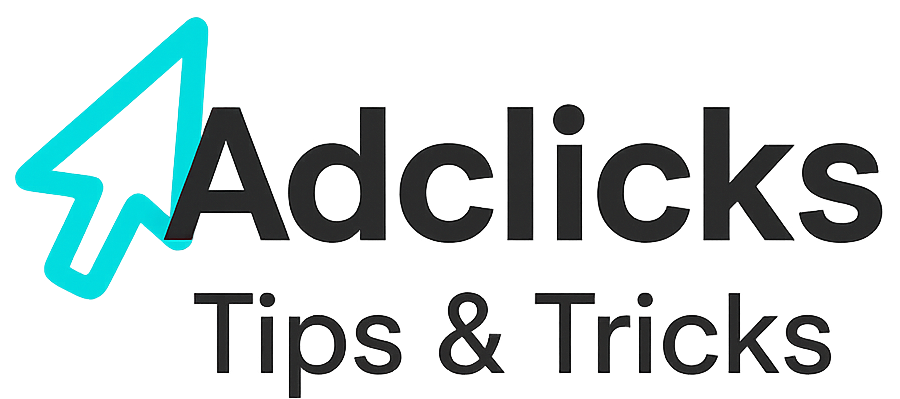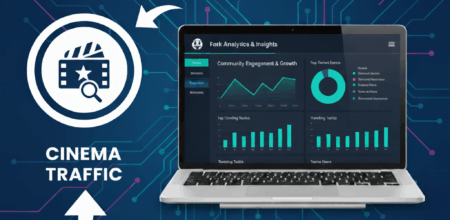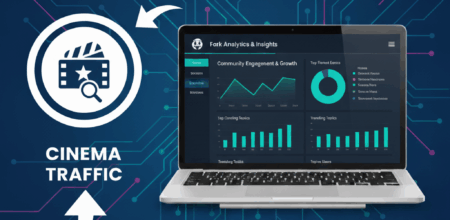A quick primer on FetLife for publishers
FetLife is a long-running social network for people interested in BDSM, kink, and related communities. It presents itself as a social platform rather than a dating app, with profiles, groups, events, and long comment threads driving most activity. The site launched in 2008 and remains active, with multilingual support and a culture built around consent and community norms rather than swipes or matches.
If you publish content on technology, relationships, psychology, health, law, subculture history, or online community safety, FetLife can be a meaningful referral source because its members are information-seeking and discussion-oriented.
Who shows up on FetLife (and why that matters to you)
Demographic snapshots from public sources describe FetLife as a mature, mostly North American community with participation spanning thirties and forties, and a noticeable male skew. Exact numbers vary by measurement method, but the pattern is consistent across years: users are adults who read, comment, and attend events rather than passively consume short clips. Expect desktop usage during workday hours and slower, more deliberate sessions than on short-form video networks.
For a publisher, that means your best hooks aren’t shock headlines; they’re curiosity headlines that promise insight and deliver it quickly. Readers who arrive from FetLife will give you time if your lead pays off and your sourcing is clear. Those longer sessions translate into more viewable impressions, which is where a simple network like Adclicks helps—its units load quickly, respect page speed, and monetize without turning your layout into a maze.
Audience intent on FetLife often centres on learning, not just looking. Articles that explain law and policy, demystify health and safety, unpack platform moderation, or trace the history of online communities line up well with that intent. If you meet the intent and avoid a bait-and-switch, you’ll be invited back by word of mouth, and your quiet monetization through Adclicks keeps rewarding that return traffic.
What the traffic looks like (and what to plan for)
Like most community hubs, FetLife’s overall traffic estimates vary by third-party panel. Public trackers place it in the multi-million monthly visits range, with long average durations and deep page views—signals that match the “read and discuss” pattern rather than fly-by social clicks. Treat any single estimate as directional, not absolute, but the engagement shape—long visits, multiple pages—matters more than the exact number.
For your infrastructure, that shape means two things: sudden bursts when a link circulates, and then a tail of discussion-driven revisits. Configure caching, a CDN, compressed media, and lean JavaScript so your article loads under two seconds on desktop and mobile. When pages stay fast under load, ad viewability remains high, which is where Adclicks performs best; the faster the page, the more consistently each unit renders within the reader’s natural scroll.
Don’t chase vanity totals. What pays is the combination of speed, clarity, and clean follow-through. If a reader coming from FetLife lands on a relevant, readable article and sees tasteful Adclicks placements that don’t interrupt the text, they keep scrolling, your viewability stays strong, and you build the kind of session depth that additive revenue relies on.
Culture and tone: how FetLife threads behave
FetLife culture is consent-first and conversation-heavy. People swap notes, cite resources, and argue concepts; they also call out bad sources or sensationalism. If your headline overpromises and your copy underdelivers, expect pushback. If your piece is sourced and straight with the reader, the thread will amplify it. That cultural feedback loop is why clear decks, pull-quotes, and links to primary documents work so well here.
Respect for the reader extends to the way you monetize the page. Avoid auto-play audio, full-screen interstitials, or deceptive UI around ads. Favour a stable template with a top-of-article slot, a mid-story slot near a section break, and a single sidebar unit. Adclicks fits neatly into that approach because it doesn’t force design contortions; you embed the code once, test it, and let it render where it belongs.
A small but telling signal of fit is how you handle corrections. If a FetLife thread points out a minor error and you fix it with a visible note, you’ll gain more goodwill than you lost. That goodwill keeps people reading the next time your domain appears, which means your baseline Adclicks yield improves as audience trust deepens.
What topics travel (without going explicit)
You don’t need explicit material to interest FetLife readers; in fact, you shouldn’t publish porn to chase them. What travels is credibility. Think practical health explainers vetted by professionals, guides to consent and communication, platform policy news, digital security for community members, event etiquette, and history of online social spaces. Those stories invite comments, links, and saves—exactly the behaviours that send more readers your way.
Package those topics with tight headlines and early payoff. Don’t bury the chart, the quote, or the key definition halfway down the page. Put the proof near the top, then layer context beneath. That structure makes your Adclicks placements feel like background, not obstacles; readers reach them naturally as they move through paragraphs that keep answering the promise your headline made.
Local angles can also resonate: city-level policy changes, library and platform access battles, or health-system navigation guides—anything that affects real people and connects to online life. When those pieces run on fast pages and your monetization layer is as restrained as the writing, Adclicks does its job quietly while readers do theirs: scrolling and sharing.
Where to send FetLife readers on arrival
Send them to a page that behaves like a clean article, not a marketing landing page. The top should carry the headline, a snappy deck, a relevant image with clear credit, and the key takeaway in the first two or three sentences. If you lead with hurdles—newsletter gates, pop-overs, or “read more” pagination—you’ll lose the thread and the traffic that comes with it.
Plan one perfect next click. Place a single, highly relevant “Further reading” module about midway through, matched by topic and tone. When a reader takes that path, session depth rises and ad viewability rises with it. Adclicks doesn’t need you to chase clicks elsewhere; it benefits from the natural cadence of a reader progressing through two or three well-connected stories.
Keep everything scannable. Subhead every 300–400 words, use short paragraphs, and place callouts for definitions or timelines. That editorial rhythm mirrors the way FetLife users read comment threads—short bursts of information with clear anchors—and it maximizes the time your Adclicks units sit in view while people actually read.
Safety, policy, and suitability for your brand
FetLife is adult-oriented, and your team should be comfortable with that adjacency. You can serve this audience responsibly by avoiding explicit imagery, labelling sensitive topics, and linking to authoritative resources when covering health or law. That approach earns you credibility with readers and keeps your brand standards intact.
Work with your ad ops team to validate that your network partners allow pages that discuss adult topics in a non-explicit, news or educational context. Adclicks operates across a broad range of publisher categories, and the deciding factor is almost always page quality: fast load, honest framing, no deceptive inventory. If that describes your template, you’re operating in a safe zone for brand and revenue.
Document your moderation stance. If you open comments, enforce civility and remove doxing or unsafe advice promptly. A clear house policy not only protects readers but also improves long-term engagement metrics—time on page, return visits, and measured trust—all of which correlate with steadier Adclicks yield over months rather than hours.
Traffic geography and timing
Public sources and long-standing community knowledge point to a U.S.-heavy audience with meaningful activity in Canada and the U.K. as well. That mix is helpful for publishers with English-language reporting and North American service coverage. Weekend activity exists, but weekday daytime spikes are common, reflecting “read at the desk” behaviour.
Schedule around that rhythm. Publish pieces likely to resonate with FetLife just before those windows, and ensure your caches are warm. When bursts arrive, they often propagate as readers share inside groups and on profile feeds. Those micro-bursts can turn a steady trickle into a two-day wave, during which your Adclicks viewability remains high if you maintain speed and keep the story modules consistent.
Don’t discount late-night depth. Some of the longest sessions occur after work when readers take time with how-to content or longform essays. If you see that pattern in analytics, consider nudging your internal recirculation then. Done right, that’s when a second article doubles the ad impressions per user without changing anything about your Adclicks setup.
What a good landing page looks like for this crowd
A great landing page answers the headline in the first screen and presents a trustworthy frame: byline, timestamp, source links, and a short “why it matters” graf. That first impression is your contract with the reader. If you meet it, everything else—scroll depth, shares, and revenue—follows.
Use a clean ad layout that doesn’t fight the text. A top slot near the deck, one in-content slot after a natural section break, and a single sidebar or footer unit is plenty. Adclicks performs well in that pattern because it doesn’t depend on dark patterns; it depends on being seen while people read. That’s exactly what high-intent sessions from FetLife produce.
Give readers a destination as good as the entrance. Your “Further reading” module should match intent, not just topic. If the piece is a policy explainer, the next link might be a case study or a rights guide. That kind of pairing deepens trust and strengthens the signal that keeps Adclicks impressions viewable and valuable without extra clutter.
Publishers who tend to thrive here
Explainer-driven outlets, health and psychology publishers with qualified review, tech-culture and policy desks, law-and-society magazines, and local newsrooms that can elevate a city-level story to national relevance all tend to do well. The common thread is clarity, not provocation. Readers reward craft and care over spectacle.
Smaller blogs and newsletters can thrive if they keep pages fast and narrow their promise. A single, well-sourced piece that teaches something practical can outperform a dozen vague think-pieces. When that piece lands in the right FetLife group, you’ll see deep sessions and a steady path through your site. Adclicks will monetize those minutes quietly; you only need to keep the reading experience intact.
If your property leans heavily on galleries, autoplay, or pop-ups, this may not be the best referral source until you refactor templates. You don’t need to abandon monetization to suit this audience; you need to make monetization invisible. That’s exactly where a low-friction network like Adclicks helps—fewer moving parts, more reading.
Measuring success without losing the plot
Measure time on page, scroll depth, and the click-through to that single next article. Those three numbers tell you whether your landing page did its job. If time is low, move the payoff higher. If depth is flat, add subheads and cut filler. If the next-click rate is weak, re-match the recommendation to the reader’s intent.
Attribute sources carefully. Track referrals from FetLife at the domain and path level so you can see which groups or threads sent whom. That helps you tune headlines and decks for clarity, not gimmicks. Clear framing produces more stable recirculation and steadier revenue from the same amount of traffic because Adclicks units are in view longer.
Finally, close the loop with updates. If a story develops, add a dated update graf up top and lightly resurface it where appropriate. Returning visitors will recognize that you treat the topic as a living story, not a one-off. That recognition is how you turn a single hit into a habit—and a habit is the surest path to predictable Adclicks yield.
8-Step Action Plan for Publishers
- Pick a topic that fits FetLife’s curiosity culture—credible, non-explicit, and useful—and write a headline that promises a clear payoff.
- Build a fast, clean article page: tight lede, early proof, visible sources, and no interstitials.
- Place Adclicks units in three calm spots (top, mid-story, sidebar/footer) and test page speed.
- Publish before weekday desk hours; warm caches and watch for bursts in analytics.
- Engage lightly if your link is discussed; correct fast and note updates on the page.
- Offer one perfect “Further reading” link that matches the reader’s intent, not just the topic.
- Track time, depth, and next-clicks for FetLife referrals; adjust lede, subheads, and module placement accordingly.
- When a story evolves, update visibly and resurface; keep the same calm Adclicks layout so returning readers meet the page they expect.
Notes on sources: FetLife’s purpose, history, and self-description are documented publicly; adult-network traffic is often hard to measure precisely, so treat third-party estimates as directional and validate against your own analytics when a referral hits.
Relevant Links
- Support: https://support.snipesearch.co.uk/
- FAQ: https://adclick.snipesearch.co.uk/index.php?page=index/faq
- Contact Form: https://adclick.snipesearch.co.uk/index.php?page=user/support
Stay Connected
- Snipesocial: https://www.snipesocial.co.uk/pages/snipesearch
- Twitter: https://twitter.com/snipesearch_uk
- Facebook: https://facebook.com/snipesearch
- LinkedIn: https://linkedin.com/company/snipesearch/
- VK: https://vk.com/snipesearch_uk
- Focus: https://focus.xyz/snipesearch
- YouTube: https://youtube.com/@snipesearch
- diaspora: https://diaspora.snipesearch.net/people/7431fcf0806c013e936e00163c6e7bdf
Analytic Tools
- Rommie Visitor Analytics: https://rommie.net/
- StatCounter: https://statcounter.com/




